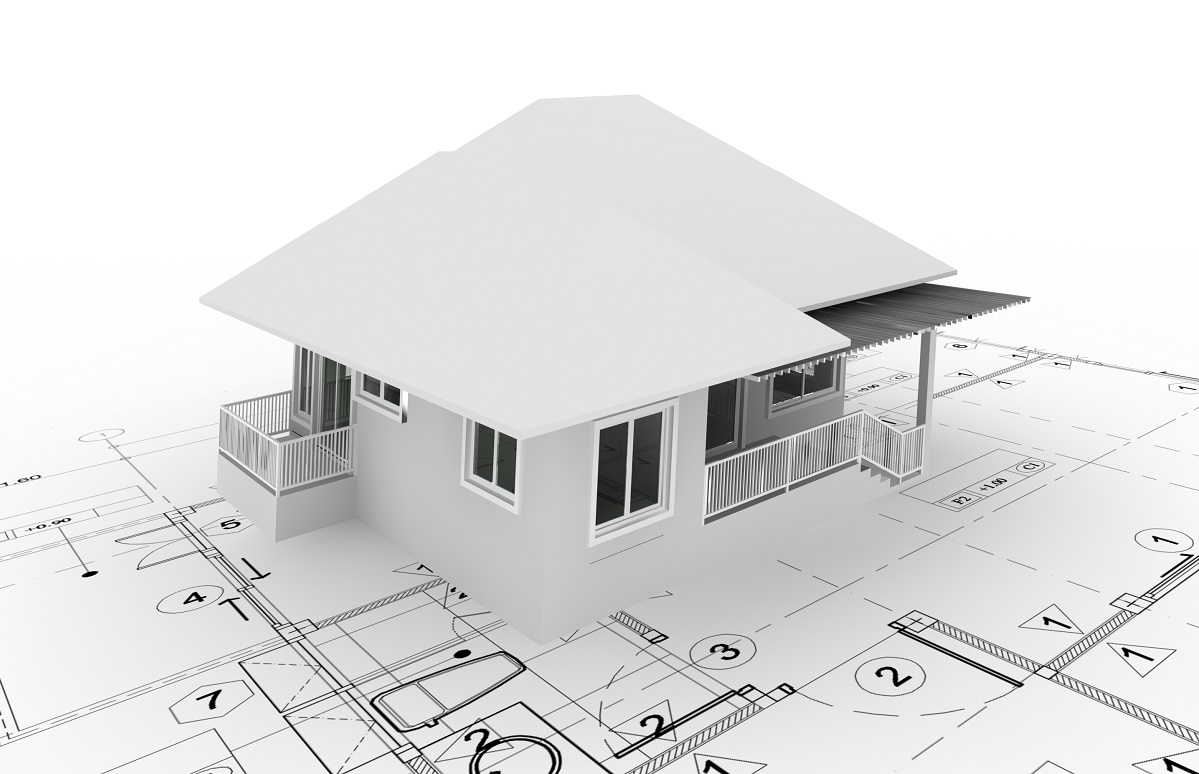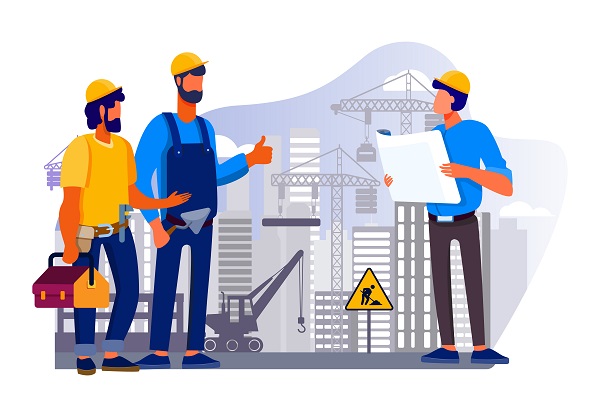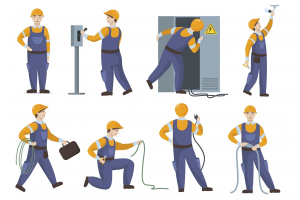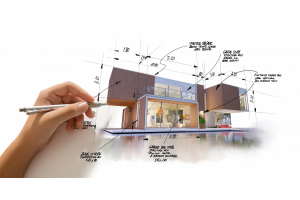
A house is not just a building or a structure but a dream, a place where you live every moment of your life, whether joy or sorrows. People spend half of their lives to save money and build their dream house.
Understandably, people are excited to see their new home, from start to finish.
People enjoy watching their home come together, from pouring the foundation to framing. And watching the house beginning to take shape; once the walls get dry, they start to visualize themselves living in the space and how they'll use it. They start planning on the furniture placements and how their friends and family will like it.
Keep in mind that a house's construction may vary from region to region and builder to builder, especially if you're building a customized home on preferences. Don't forget to ask your contractor about his or her specific policies and procedures.
Following are some procedures for building the best house.
Design a plan

Planning is an essential part of the construction and home improvement process. The Winchester Mystery House is the perfect fit to explain the importance of a design. This mansion was built over 38 years by an eccentric widow in San Fransisco who thought she'd fall prey to vengeful spirits if she stopped construction on the house. The house is a labyrinth of stairs that disappear into the ceilings, the narrow hallways disappear in thin air, doors that open onto two-story drops. It's fascinating but more like a haunted house.
So before making a design, make sure to use proper measurements.
From direction lots to room layouts and flow of the rooms, what kind of lighting should be used in different areas and last but not the least, power points, you will need more than you think.
Many online sites that will help you set a good plan for your house, like Floorplanner and RoomSketcher, which let you create mock floorplans.
Also, keep track of all your design ideas that you liked, and you can alter them to make your own dream house .you can pin each idea to the specific rooms or make a memo so that you can easily show the contractor at the time of construction.
Budget management

No matter how much you plan your budget, you'll realize that it was not enough once the construction starts. There could be any extra cost incurred which you or your builder were unable to estimate. For instance, your builder is unlikely to have cost estimates such as electrical and gas meters, wiring hookups, or coverings. Because the materials costs for items such as concrete, wooden items, and building supplies are finishing costs and could run anywhere from 15-25% of your budget. You'll also need to consider site costs and zoning fees, which means the costs needed for preparing or registering your site for construction, and you may also have to pay for planning application fees. For this purpose, aia g703 foam is to be maintained.
Pick the right builder.
Picking the right builder is one of the most important decisions you will have to build your home. Whichever builder you choose, there will be a long-term contract between you two.
Following are the factors you should know before choosing a builder :
Credentials:
Make sure that your builder has a license and is trustworthy. Also, make sure that the builder you choose is a member of the National Association of Home Builders and knows the home improvement contract.
References:
Check out the past projects of the builders. Were his previous customers satisfied with his work? Don't hesitate to ask the builder for references before signing a contract. Also, cross-check if there are any complaints registered against him in the police database.
Past work
Have a close look at some of the houses the builder has constructed in the past. Make sure the level of quality is high. Also, look into resale data on some of the places the builder has previously built.
Style
When looking into the builder's past work, check that it suits your design style. A builder might be very accomplished at constructing a particular type of home, but if what you want is outside their area of expertise, it might be wise to look elsewhere.
Personality
As mentioned above, you'll be working with your builder for several months. Could you make sure you're comfortable with them? Also, make sure they communicate well. If a builder doesn't share well with you, likely, they don't communicate well with their contractors either.
Price
All of this is a moot point if a builder is outside your budget.
Understand your agreement

Carefully read through the aia contract document with your builder to make sure you understand its contents. Make sure you're not taken by surprise by what the construction costs cover and what they don't cover.
Make sure it includes a cooling-off period and that it specifies a timeframe for construction that suits your needs. Check to see that it has detailed plans, warranty, and insurance information. Also, pay close attention to the payment schedule.
Finally, it's wise to have a lawyer look over the contract before you sign. Cross out any blank spaces, and make sure any contract variations are well documented and mutually agreed over.
Know what you're entitled to
If you're building your first home or an environmentally-friendly structure, you may be entitled to grants, depending on where you live. It could substantially offset the cost of your home, so you should speak with your mortgage lender or local council to explore any possible credits and rebates.
Get your financing in order.
Chances are you'll need a construction home loan to finance the process when you're building a property. A construction home loan is structured differently than a regular home loan in that the lender won't release all the funds at once. Instead, the lender will decide how much you need for the project and will then release the funds in periodic payments to your builder. These regular payments are known as draws. They'll be paid out after each stage of your construction.
Another way construction loans can differ is in the size of deposit lenders require. Because construction loans are inherently riskier, lenders might need a 20% deposit.
Before you seek out financing, make sure you have a detailed plan in place. Since construction home loans rely on an estimate of the completed house's assumed value, your lender will want to have detailed construction plans that are full cost.
Then comes the structural phase, which includes the following steps
Prepare Construction Site and Pour foundation
- The first step is to get a construction permit
- Then the Construction Crew Levels the Site
- After leveling a Wooden Forms is placed as a temporary Foundation
Footings Are Installed
Before starting the construction, the local government must approve the design and provide permits for everything from the zoning to grading, septic systems, home construction, electrical work, to plumbing. you can not start the physical construction without the permits
Complete Rough Framing
Once the Floors, Walls, and Roofs Are Completed, a weather sheath is Applied to the Exterior Walls, which is covered with a Protective Wrap to guard the exterior against whether conditions. The house's interior walls are sheathed with plywood or oriented strand board (OSB) and then the roof, windows, and exterior doors are installed.
The walls are then covered with a house wrap; it prevents liquid water from infiltrating the structure while allowing water vapor to escape. Framing reduces the likelihood of mold and wood rot.
Complete Rough Plumbing, Electrical HVAC

The Following Are Installed:
- Pipes and Wires
- Sewer Lines and Vents
- Water Supply Lines
- Bathtubs, Shower Units
- Ductwork for HVAC System
- HVAC Vent Pipes
Once the shell is finished, you can now install roofing and siding walls . Simultaneously, the electricals and plumbing get started, wires and pipes are installed through the interior walls, ceilings, and floors.
Water supply lines, exhaust vents, and sewer lines are installed for every fixture. then comes the bathroom installation, which includes
Bathtubs and one-piece shower/tub units point because there's more room to maneuver large, heavy objects.
Communicate constantly
Throughout the process, communicate with your builder and tradespeople often. Get regular updates on the progress of construction, and check-in yourself. It's a good idea to take pictures of the progress regularly so you can document any problem areas.
Don't be afraid to stick to your guns. If your builder, contractor, or tradesmen tell you something can't be done, push back if you've done your research. It might cost you extra, but the odds are that you can accomplish your vision with the right amount of effort. It's worth putting up a fight for details that are important to you. After all, you're the one who has to live in the completed home.
With good communication, though, you should be able to avoid arguments during the building process. If you've laid out what you want and the details you see as non-negotiable, construction will run much smoother.


